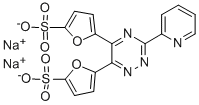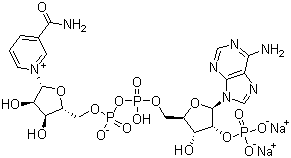#lcanon
Text
Why do ppl hate Jones so much...
#that's literally my dad /j#like ofc he's gonna charge you he has a job to do and money to make#if you don't wanna pay so bad exit w/o saving like I do.#Can't let anyone in Sel/phia know I got my ass beat by an overgrown horse /j#put the battle system on easy.... fill your inventory with food... grind a little... find a decent time during battle to eat#hell just ask a couple ppl in town to come with you to fight!#I know I'm gonna find it necessary to ask for help once I'm able to play again. I'll probably ask F/orte or Vo#lcanon#but the game gives you so many options to survive a battle ldjsksj come on#.txt#Nick.txt#Nick talks too much#Vamppostz
0 notes
Photo




I ❤️ light leaks
#film#35mm film#minolta#fuji#kodak#street photography#photography#film photography#cinestill#expired film#light leaks#lcanon#helios 44-2
1 note
·
View note
Note
¿Pondréis info sobre los personajes?
Hola anon, tienes toda la info sobre los pjs en el siguiente link:
https://blackfyre-rpg.tumblr.com/lcanon
Saludos
Fuegoscuro.
0 notes
Note
I just saw the post with GD and kids and I was wondering if there's a video or something where GD interacts or does something with kids. Also is their a video for the one where he's on like this car type thing with a boy behind :)
omo im so sorry! i do not know of any vids about GD interacting with kids :( i do have THIS vid of him talking about his future wife and kids. but no footage. and theres THIS one with the little bigbang kids. he acts on a show cutely with a kid in a competition on IDOLWORLD.
A lot of those pics i added to that post were of Sean Ro's children and GDragon- whom GD addresses in the future wife/kids video i recomended. the four wheeling thing... im not sure i found those on google. :/ and then others were when GDragon visited young JiYong in the hospital since his Applers sent in $$$ to help the child.
but i believe that video of young JiYong has been taken off of youtube :/
this is such a terrible answer IM SORRY! i just had those pics saved cuz i thought they were ADORABLE!
and sorry for the late reply ive been busy!! *sobs*
3 notes
·
View notes
Text
Ferene disodium salt CAS#: 79551-14-7

IdentificationPhysical DataSpectraRoute of Synthesis (ROS)Safety and HazardsOther Data
Identification
Product NameFerene disodium saltIUPAC Namedisodium;5-furan-2-sulfonateMolecular StructureCAS Registry Number 79551-14-7Synonyms3-(2-pyridyl)-5,6-bis(2-(5-furyl sulfonic acid)-1,2,4-triazine), disodium salt, FereneMolecular FormulaC16H8N4O8S2*2NaMolecular Weight494.373InChI InChI=1S/C16H10N4O8S2.2Na/c21-29(22,23)12-6-4-10(27-12)14-15(11-5-7-13(28-11)30(24,25)26)19-20-16(18-14)9-3-1-2-8-17-9;;/h1-8H,(H,21,22,23)(H,24,25,26);;/q;2*+1/p-2InChI KeyIVLSEFOVPQFJBB-UHFFFAOYSA-LCanonical SMILESC1=CC=NC(=C1)C2=NC(=C(N=N2)C3=CC=C(O3)S(=O)(=O))C4=CC=C(O4)S(=O)(=O)..
Physical Data
AppearanceYellow crystallineFlash Point>70°C
Spectra
Description (NMR Spectroscopy)Comment (NMR Spectroscopy)Spin-spin coupling constants1H-1HFerene disodium salt CAS 79551-14-7 HNMR
Usual Required Specifications 1 of Ferene disodium salt CAS#: 79551-14-7 The material must be 5,5′(3-(2-pyridyl) -1,2,4 triazine-5,6 diyl) bis-2-furansulfonic acid, disodium salt, C16H8N4S2O8Na2 •3H2OThe molar extinction coefficient at 304 nm of Ferene in water must be 26,000 ±3%, when assayed asfollows:Dissolve approximately 20 mg of ferene in one liter of distilled water. Determine the opticaldensity of the solution at 304 nm (one cm path length cell) and calculate the ε max at 304 nm. The molar extinction coefficient at 593 nm of Ferene in the presence of excess Fe+2 must be≥ 34,000,under the following assay conditions: Solutions: (1) Stock Buffer: 1.0 M sodium acetate, pH 4.75; (2) Iron-ascorbic acid solution: Dissolve 35 mg FeSO4•7 H2O and 350 mg ascorbic acid in 100 mL of buffer; (3) Ferene solution: Dissolve approximately 20 mg ferene in 25 mL of distilled water. Mix equal volumes of solutions 2 and 3. Allow the color to develop for 10 minutes and then determine theoptical density of the solution at 593 nm employing a cell of 1.0 mm path length.
Route of Synthesis (ROS)
Route of Synthesis (ROS) of Ferene disodium salt CAS 79551-14-7
ConditionsYieldWith hydroxylamine hydrochloride In further solvent(s) Kinetics iron, complexone and hydroxylamine as reducing agent mixed with acetatebuffer, 1 M HCl or 1 M NaOH added to adjust required pH in a range 1-10; detected by UV spectroscopy
Safety and Hazards
Pictogram(s)SignalWarningGHS Hazard StatementsH315: Causes skin irritation H319: Causes serious eye irritation H335: May cause respiratory irritation Information may vary between notifications depending on impurities, additives, and other factors.Precautionary Statement CodesP261, P264, P271, P280, P302+P352, P304+P340, P305+P351+P338, P312, P321, P332+P313, P337+P313, P362, P403+P233, P405, and P501(The corresponding statement to each P-code can be found at the GHS Classification page.) For more detailed information, please visit ECHA C&L website
Other Data
TransportationNot dangerous goodsAt ambient temperature with a tightly closed container in a cool, dry place and keep away from light.HS Code294200StorageAt ambient temperature with a tightly closed container in a cool, dry place and keep away from light. If it will be stored in a refrigerator, it must be sealed well and moistureproof and out of contact with light.Shelf Life2 yearsMarket PriceUSD 7500/kg
Use Pattern3-(2-Pyridyl)-5,6-di(2-furyl)-1,2,4-triazine-5′,5′′-disulfonic acid disodium salt also known as Ferene is a chelating agent which usually binds with Fe2+ ion to form coloured complex. Colorimetric reagent for iron, which is more sensitive than other reagents (e.g. Ferrozine), molar absorptivity 35500 liters/mol cm. It was used in chromogen screening while studying non-transferrin-bound iron quantification. It was used in measuring the chelating activity on ferrous ions.Iron complexing reagent
Read the full article
0 notes
Text
POTASSIUM TETRATHIONATE CAS#: 13932-13-3

IdentificationPhysical DataSpectraRoute of Synthesis (ROS)Safety and HazardsOther Data
Identification
Product NamePOTASSIUM TETRATHIONATEMolecular StructureCAS Registry Number 13932-13-3EINECS Number237-702-3MDL NumberMFCD00079233Synonymsdipotassiumtetrathionate;Tetrathionicacid,dipotassiumsalt;POTASSIUM TETRATHIONATE;POTASSIUM TETRATHIONMolecular FormulaK2O6S4Molecular Weight302.5InChIInChI=1S/2K.H2O6S4/c;;1-9(2,3)7-8-10(4,5)6/h;;(H,1,2,3)(H,4,5,6)/q2*+1;/p-2 InChI KeyUVTKHPSJNFFIDG-UHFFFAOYSA-LCanonical SMILESS(=O)(=O)SSS(=O)(=O)..
Patent InformationNo data available
Physical Data
AppearanceWhite crystalline powderDensity2.296 g/cm3 Bulk Density 770 kg/m3 Potency>2000 mg/kg LD50, oral (Rat)Solubility232g/lSensitivityHygroscopic
Spectra
No data available
Route of Synthesis (ROS)
No data available
Safety and Hazards
Pictogram(s)SignalWarningGHS Hazard StatementsH315: Causes skin irritation H319: Causes serious eye irritation H335: May cause respiratory irritation Information may vary between notifications depending on impurities, additives, and other factors. Precautionary Statement CodesP261, P264, P271, P280, P302+P352, P304+P340, P305+P351+P338, P312, P321, P332+P313, P337+P313, P362, P403+P233, P405, and P501(The corresponding statement to each P-code can be found at the GHS Classification page.) For more detailed information, please visit ECHA C&L website
Source: European Chemicals Agency (ECHA)License Note: Use of the information, documents and data from the ECHA website is subject to the terms and conditions of this Legal Notice, and subject to other binding limitations provided for under applicable law, the information, documents and data made available on the ECHA website may be reproduced, distributed and/or used, totally or in part, for non-commercial purposes provided that ECHA is acknowledged as the source: "Source: European Chemicals Agency, http://echa.europa.eu/". Such acknowledgement must be included in each copy of the material. ECHA permits and encourages organisations and individuals to create links to the ECHA website under the following cumulative conditions: Links can only be made to webpages that provide a link to the Legal Notice page.License URL: https://echa.europa.eu/web/guest/legal-noticeRecord Name: Dipotassium tetrathionateURL: https://echa.europa.eu/information-on-chemicals/cl-inventory-database/-/discli/details/124913Description: The information provided here is aggregated from the "Notified classification and labelling" from ECHA's C&L Inventory. Read more: https://echa.europa.eu/information-on-chemicals/cl-inventory-database
Other Data
TransportationNot dangerous goodsUnder +2°C to +8°C and away from lightHS Code284290StorageStore at +2°C to +8°CShelf LifeMarket Price
Use PatternPOTASSIUM TETRATHIONATE CAS#: 13932-13-3 is commonly used in the manufacture of mediaPOTASSIUM TETRATHIONATE CAS#: 13932-13-3 as bacterial infectionsPreservative agent for compositions for udder hygienePreservative agent for compositions for teat hygienePreservative agent for compositions for treatment of mastitisSurface coating systemsFertiliser for agricultural compositions
Read the full article
0 notes
Text
Triphosphopyridine nucleotide disodium salt CAS#: 24292-60-2

IdentificationPhysical DataSpectraRoute of Synthesis (ROS)Safety and HazardsOther Data
Identification
Product NameTriphosphopyridine nucleotide disodium saltIUPAC Namedisodium;methoxy-oxidophosphoryl]oxy-hydroxyphosphoryl]oxymethyl]-4-hydroxyoxolan-3-yl] phosphateMolecular StructureCAS Registry Number 24292-60-2EINECS NumberNo data availableMDL NumberMFCD00065390Beilstein Registry NumberNo data availableSynonymsb-NADH phosphate disodium salt;b-Nicotinamide adenine dinucleotide phosphate disodium salt;disodium methoxy-oxido-phosphoryl]oxy-hydroxy-phosphoryl]oxymethyl]-4-hydroxy-tetrahydrofuran-3-yl] phosphate;disodium 1-methoxy}(hydroxy)phosphoryl phosphonato)oxy]methyl}-3,4-dihydroxyoxolan-2-yl]-3-carbamoyl-1??-pyridin-1-ylium;Nicotinamide adenine dinucleotide phosphate disodium salt;Nicotinamide adenine dinucleotide phosphatedisodium salt;sodium (2R,3R,4R,5R)-2-(6-amino-9H-purin-9-yl)-5-((((((((2R,3S,4R,5R)-5-(3-carbamoylpyridin-1-ium-1-yl)-3,4-dihydroxytetrahydrofuran-2-yl)methoxy)oxidophosphoryl)oxy)(hydroxy)phosphoryl)oxy)methyl)-4-hydroxytetrahydrofuran-3-yl phosphate;Triphosphopyridine nucleotide disodium salt;Triphosphopyridine nucleotide, disodium salt;TRIPHOSPHOPYRIDINE NUCLEOTIDEDISODIUM SALT;β-NICOTINAMIDE ADENINE DINUCLEOTIDE PHOSPHATE DISODIUM SALTMolecular FormulaC21H26N7Na2O17P3Molecular Weight787.37InChIInChI=1S/C21H28N7O17P3.2Na/c22-17-12-19(25-7-24-17)28(8-26-12)21-16(44-46(33,34)35)14(30)11(43-21)6-41-48(38,39)45-47(36,37)40-5-10-13(29)15(31)20(42-10)27-3-1-2-9(4-27)18(23)32;;/h1-4,7-8,10-11,13-16,20-21,29-31H,5-6H2,(H7-,22,23,24,25,32,33,34,35,36,37,38,39);;/q;2*+1/p-2/t10-,11-,13-,14-,15-,16-,20-,21-;;/m1../s1InChI KeyWSDDJLMGYRLUKR-WUEGHLCSSA-LCanonical SMILESc1cc(c(c1)2(((O2)COP(=O)()OP(=O)(O)OC3(((O3)n4cnc5c4ncnc5N)OP(=O)())O)O)O)C(=O)N..
Patent InformationNo data available
Physical Data
AppearanceWhite to yellow powderSolubility50 g/L
Spectra
No data available
Route of Synthesis (ROS)
No data available
Safety and Hazards
GHS Hazard StatementsNot ClassifiedFor more detailed information, please visit ECHA C&L website
Source: European Chemicals Agency (ECHA)License Note: Use of the information, documents and data from the ECHA website is subject to the terms and conditions of this Legal Notice, and subject to other binding limitations provided for under applicable law, the information, documents and data made available on the ECHA website may be reproduced, distributed and/or used, totally or in part, for non-commercial purposes provided that ECHA is acknowledged as the source: “Source: European Chemicals Agency, http://echa.europa.eu/”. Such acknowledgement must be included in each copy of the material. ECHA permits and encourages organisations and individuals to create links to the ECHA website under the following cumulative conditions: Links can only be made to webpages that provide a link to the Legal Notice page.License URL: https://echa.europa.eu/web/guest/legal-noticeRecord Name: (1-Cyano-2-ethoxy-2-oxoethylidenaminooxy)dimethylamino-morpholino-carbenium hexafluorophosphateURL: https://echa.europa.eu/information-on-chemicals/cl-inventory-database/-/discli/details/213446Description: The information provided here is aggregated from the “Notified classification and labelling” from ECHA’s C&L Inventory. Read more: https://echa.europa.eu/information-on-chemicals/cl-inventory-database
Other Data
TransportationNONH for all modes of transportUnder the room temperature and away from lightHS Code290621StorageStore at -20 ℃, sealed and protected from light.Shelf Life3 yearsMarket PriceUSD
Use PatternTriphosphopyridine nucleotide disodium salt CAS#: 24292-60-2 is a kind of coenzyme.Triphosphopyridine nucleotide disodium salt CAS#: 24292-60-2 is a substance in which nicotinic acid amide adenine dinucleotide and a phosphate molecule are bound by ester bond.NADP is widely present in the biological world.NADP is a hydrogen receptor and can be used for the development and development of a variety of in vitro diagnostic reagents.
Read the full article
0 notes
Text
beta-Nicotinamide adenine dinucleotide disodium salt CAS#: 606-68-8

IdentificationPhysical DataSpectraRoute of Synthesis (ROS)Safety and HazardsOther Data
Identification
Product Namebeta-Nicotinamide adenine dinucleotide disodium saltIUPAC Namedisodium;methoxy-oxidophosphoryl] methyl phosphateMolecular StructureCAS Registry Number 606-68-8EINECS NumberNo data availableMDL NumberMFCD00036200Beilstein Registry NumberNo data availableSynonymsβ-nicotinamide adenine dinucleotide, disodium salt, reduced form, β-nicotinamide adenine dinucleotide, reduced form, disodium salt, β-nicotinamide adenine dinucleotide disodium salt reduced form, β-nicotinamide adenine dinucleotide phosphate disodium salt, β-nicotinamide adenine dinucleotide, reduced disodium salt, β-nicotinamide adenine dinucleotide reduced disodium salt, β-nicotinamide adenine dinucleotide disodium salt;CAS Number: 606-68-8Molecular FormulaC21H27N7Na2O14P2Molecular Weight709.40InChIInChI=1S/C21H29N7O14P2.2Na/c22-17-12-19(25-7-24-17)28(8-26-12)21-16(32)14(30)11(41-21)6-39-44(36,37)42-43(34,35)38-5-10-13(29)15(31)20(40-10)27-3-1-2-9(4-27)18(23)33;;/h1,3-4,7-8,10-11,13-16,20-21,29-32H,2,5-6H2,(H2,23,33)(H,34,35)(H,36,37)(H2,22,24,25);;/q;2*+1/p-2/t10-,11-,13-,14-,15-,16-,20-,21-;;/m1../s1InChI KeyQRGNQKGQENGQSE-WUEGHLCSSA-LCanonical SMILESc1nc(c2c(n1)n(cn2)3(((O3)COP(=O)()OP(=O)()OC4(((O4)N5C=CCC(=C5)C(=O)N)O)O)O)O)N..
Patent InformationNo data available
Physical Data
AppearanceWhite to light yellow powderSolubilityH2O: 50 mg/mL, clear to nearly clear, yellow
Description (Association (MCS))Solvent (Association (MCS))Temperature (Association (MCS)), °CPartner (Association (MCS))NMR spectrum of the complexH2O, D2O26.85CaCl2NMR spectrum of the complexH2O, D2O26.85poly(styrenesulfonate)NMR spectrum of the complexsolidpoly(aniline)-poly(styrenesulfonate)NMR spectrum of the complexsolidpoly(aniline)-poly(styrenesulfonate)NMR spectrum of the complexvarious solvent(s)Al(III)Further physical properties of the complexH2Oglycine, ferric perchlorate
Spectra
Description (NMR Spectroscopy)Nucleus (NMR Spectroscopy)Solvents (NMR Spectroscopy)Temperature (NMR Spectroscopy), °C Frequency (NMR Spectroscopy), MHzChemical shifts, Spectrum1Haq. phosphate buffer24.84Spectrum31Pvarious solvent(s)23201.5Spectrum1Hvarious solvent(s)23300.1Spectrum13Cvarious solvent(s)2375.5
Description (UV/VIS Spectroscopy)Solvent (UV/VIS Spectroscopy)Comment (UV/VIS Spectroscopy)Absorption Maxima (UV/VIS), nmExt./Abs. Coefficient, l·mol-1cm-1aq. buffer340Spectrum3406220Spectrumaq. phosphate buffer260,340Spectrumaq. phosphate bufferRemark: pH=7aq. phosphate bufferRemark: pH=7340
Description (Raman Spectroscopy)Comment (Raman Spectroscopy)BandsH2OSpectrumH2ORaman resonance effect
Route of Synthesis (ROS)
Route of Synthesis (ROS) of beta-Nicotinamide adenine dinucleotide disodium salt CAS 606-68-8
ConditionsYieldWith palladium 10% on activated carbon; hydrogen In water at 20℃; for 5h;91%
Safety and Hazards
GHS Hazard StatementsNot ClassifiedFor more detailed information, please visit ECHA C&L website
Source: European Chemicals Agency (ECHA)License Note: Use of the information, documents and data from the ECHA website is subject to the terms and conditions of this Legal Notice, and subject to other binding limitations provided for under applicable law, the information, documents and data made available on the ECHA website may be reproduced, distributed and/or used, totally or in part, for non-commercial purposes provided that ECHA is acknowledged as the source: “Source: European Chemicals Agency, http://echa.europa.eu/”. Such acknowledgement must be included in each copy of the material. ECHA permits and encourages organisations and individuals to create links to the ECHA website under the following cumulative conditions: Links can only be made to webpages that provide a link to the Legal Notice page.License URL: https://echa.europa.eu/web/guest/legal-noticeRecord Name: (1-Cyano-2-ethoxy-2-oxoethylidenaminooxy)dimethylamino-morpholino-carbenium hexafluorophosphateURL: https://echa.europa.eu/information-on-chemicals/cl-inventory-database/-/discli/details/213446Description: The information provided here is aggregated from the “Notified classification and labelling” from ECHA’s C&L Inventory. Read more: https://echa.europa.eu/information-on-chemicals/cl-inventory-database
Other Data
TransportationNONH for all modes of transportUnder the room temperature and away from lightHS Code290621StorageStore at -20 ℃, sealed and protected from light.Shelf Life3 yearsMarket PriceUSD
Use Patternbeta-Nicotinamide adenine dinucleotide disodium salt CAS 606-68-8 Chemical processes/laboratory usecomponent of electrolytesugar batterysystem for electricity generation based on hexose or pentose sugars oxidation with use of enzymesfibrosis inhibitor; inflammation inhibitor; acute inflammatory response inhibitor; migration or proliferation of connective tissue cells inhibitor; angiogenesis inhibitor; tissue remodelling inhibitor; reduces extracellular matrix (ECM) production; promotes ECM breakdown; collagen production inhibitor; collagen release inhibitorExcessive scarringSurgical adhesion
Read the full article
0 notes
Text
beta-Nicotinamide adenine dinucleotide disodium salt CAS#: 606-68-8

IdentificationPhysical DataSpectraRoute of Synthesis (ROS)Safety and HazardsOther Data
Identification
Product Namebeta-Nicotinamide adenine dinucleotide disodium saltIUPAC Namedisodium;methoxy-oxidophosphoryl] methyl phosphateMolecular StructureCAS Registry Number 606-68-8EINECS NumberNo data availableMDL NumberMFCD00036200Beilstein Registry NumberNo data availableSynonymsβ-nicotinamide adenine dinucleotide, disodium salt, reduced form, β-nicotinamide adenine dinucleotide, reduced form, disodium salt, β-nicotinamide adenine dinucleotide disodium salt reduced form, β-nicotinamide adenine dinucleotide phosphate disodium salt, β-nicotinamide adenine dinucleotide, reduced disodium salt, β-nicotinamide adenine dinucleotide reduced disodium salt, β-nicotinamide adenine dinucleotide disodium salt;CAS Number: 606-68-8Molecular FormulaC21H27N7Na2O14P2Molecular Weight709.40InChIInChI=1S/C21H29N7O14P2.2Na/c22-17-12-19(25-7-24-17)28(8-26-12)21-16(32)14(30)11(41-21)6-39-44(36,37)42-43(34,35)38-5-10-13(29)15(31)20(40-10)27-3-1-2-9(4-27)18(23)33;;/h1,3-4,7-8,10-11,13-16,20-21,29-32H,2,5-6H2,(H2,23,33)(H,34,35)(H,36,37)(H2,22,24,25);;/q;2*+1/p-2/t10-,11-,13-,14-,15-,16-,20-,21-;;/m1../s1InChI KeyQRGNQKGQENGQSE-WUEGHLCSSA-LCanonical SMILESc1nc(c2c(n1)n(cn2)3(((O3)COP(=O)()OP(=O)()OC4(((O4)N5C=CCC(=C5)C(=O)N)O)O)O)O)N..
Patent InformationNo data available
Physical Data
AppearanceWhite to light yellow powderSolubilityH2O: 50 mg/mL, clear to nearly clear, yellow
Description (Association (MCS))Solvent (Association (MCS))Temperature (Association (MCS)), °CPartner (Association (MCS))NMR spectrum of the complexH2O, D2O26.85CaCl2NMR spectrum of the complexH2O, D2O26.85poly(styrenesulfonate)NMR spectrum of the complexsolidpoly(aniline)-poly(styrenesulfonate)NMR spectrum of the complexsolidpoly(aniline)-poly(styrenesulfonate)NMR spectrum of the complexvarious solvent(s)Al(III)Further physical properties of the complexH2Oglycine, ferric perchlorate
Spectra
Description (NMR Spectroscopy)Nucleus (NMR Spectroscopy)Solvents (NMR Spectroscopy)Temperature (NMR Spectroscopy), °C Frequency (NMR Spectroscopy), MHzChemical shifts, Spectrum1Haq. phosphate buffer24.84Spectrum31Pvarious solvent(s)23201.5Spectrum1Hvarious solvent(s)23300.1Spectrum13Cvarious solvent(s)2375.5
Description (UV/VIS Spectroscopy)Solvent (UV/VIS Spectroscopy)Comment (UV/VIS Spectroscopy)Absorption Maxima (UV/VIS), nmExt./Abs. Coefficient, l·mol-1cm-1aq. buffer340Spectrum3406220Spectrumaq. phosphate buffer260,340Spectrumaq. phosphate bufferRemark: pH=7aq. phosphate bufferRemark: pH=7340
Description (Raman Spectroscopy)Comment (Raman Spectroscopy)BandsH2OSpectrumH2ORaman resonance effect
Route of Synthesis (ROS)
Route of Synthesis (ROS) of beta-Nicotinamide adenine dinucleotide disodium salt CAS 606-68-8
ConditionsYieldWith palladium 10% on activated carbon; hydrogen In water at 20℃; for 5h;91%
Safety and Hazards
GHS Hazard StatementsNot ClassifiedFor more detailed information, please visit ECHA C&L website
Source: European Chemicals Agency (ECHA)License Note: Use of the information, documents and data from the ECHA website is subject to the terms and conditions of this Legal Notice, and subject to other binding limitations provided for under applicable law, the information, documents and data made available on the ECHA website may be reproduced, distributed and/or used, totally or in part, for non-commercial purposes provided that ECHA is acknowledged as the source: “Source: European Chemicals Agency, http://echa.europa.eu/”. Such acknowledgement must be included in each copy of the material. ECHA permits and encourages organisations and individuals to create links to the ECHA website under the following cumulative conditions: Links can only be made to webpages that provide a link to the Legal Notice page.License URL: https://echa.europa.eu/web/guest/legal-noticeRecord Name: (1-Cyano-2-ethoxy-2-oxoethylidenaminooxy)dimethylamino-morpholino-carbenium hexafluorophosphateURL: https://echa.europa.eu/information-on-chemicals/cl-inventory-database/-/discli/details/213446Description: The information provided here is aggregated from the “Notified classification and labelling” from ECHA’s C&L Inventory. Read more: https://echa.europa.eu/information-on-chemicals/cl-inventory-database
Other Data
TransportationNONH for all modes of transportUnder the room temperature and away from lightHS Code290621StorageStore at -20 ℃, sealed and protected from light.Shelf Life3 yearsMarket PriceUSD
Use Patternbeta-Nicotinamide adenine dinucleotide disodium salt CAS 606-68-8 Chemical processes/laboratory usecomponent of electrolytesugar batterysystem for electricity generation based on hexose or pentose sugars oxidation with use of enzymesfibrosis inhibitor; inflammation inhibitor; acute inflammatory response inhibitor; migration or proliferation of connective tissue cells inhibitor; angiogenesis inhibitor; tissue remodelling inhibitor; reduces extracellular matrix (ECM) production; promotes ECM breakdown; collagen production inhibitor; collagen release inhibitorExcessive scarringSurgical adhesion
Read the full article
0 notes
Text
beta-Nicotinamide adenine dinucleotide disodium salt CAS#: 606-68-8

IdentificationPhysical DataSpectraRoute of Synthesis (ROS)Safety and HazardsOther Data
Identification
Product Namebeta-Nicotinamide adenine dinucleotide disodium saltIUPAC Namedisodium;methoxy-oxidophosphoryl] methyl phosphateMolecular StructureCAS Registry Number 606-68-8EINECS NumberNo data availableMDL NumberMFCD00036200Beilstein Registry NumberNo data availableSynonymsβ-nicotinamide adenine dinucleotide, disodium salt, reduced form, β-nicotinamide adenine dinucleotide, reduced form, disodium salt, β-nicotinamide adenine dinucleotide disodium salt reduced form, β-nicotinamide adenine dinucleotide phosphate disodium salt, β-nicotinamide adenine dinucleotide, reduced disodium salt, β-nicotinamide adenine dinucleotide reduced disodium salt, β-nicotinamide adenine dinucleotide disodium salt;CAS Number: 606-68-8Molecular FormulaC21H27N7Na2O14P2Molecular Weight709.40InChIInChI=1S/C21H29N7O14P2.2Na/c22-17-12-19(25-7-24-17)28(8-26-12)21-16(32)14(30)11(41-21)6-39-44(36,37)42-43(34,35)38-5-10-13(29)15(31)20(40-10)27-3-1-2-9(4-27)18(23)33;;/h1,3-4,7-8,10-11,13-16,20-21,29-32H,2,5-6H2,(H2,23,33)(H,34,35)(H,36,37)(H2,22,24,25);;/q;2*+1/p-2/t10-,11-,13-,14-,15-,16-,20-,21-;;/m1../s1InChI KeyQRGNQKGQENGQSE-WUEGHLCSSA-LCanonical SMILESc1nc(c2c(n1)n(cn2)3(((O3)COP(=O)()OP(=O)()OC4(((O4)N5C=CCC(=C5)C(=O)N)O)O)O)O)N..
Patent InformationNo data available
Physical Data
AppearanceWhite to light yellow powderSolubilityH2O: 50 mg/mL, clear to nearly clear, yellow
Description (Association (MCS))Solvent (Association (MCS))Temperature (Association (MCS)), °CPartner (Association (MCS))NMR spectrum of the complexH2O, D2O26.85CaCl2NMR spectrum of the complexH2O, D2O26.85poly(styrenesulfonate)NMR spectrum of the complexsolidpoly(aniline)-poly(styrenesulfonate)NMR spectrum of the complexsolidpoly(aniline)-poly(styrenesulfonate)NMR spectrum of the complexvarious solvent(s)Al(III)Further physical properties of the complexH2Oglycine, ferric perchlorate
Spectra
Description (NMR Spectroscopy)Nucleus (NMR Spectroscopy)Solvents (NMR Spectroscopy)Temperature (NMR Spectroscopy), °C Frequency (NMR Spectroscopy), MHzChemical shifts, Spectrum1Haq. phosphate buffer24.84Spectrum31Pvarious solvent(s)23201.5Spectrum1Hvarious solvent(s)23300.1Spectrum13Cvarious solvent(s)2375.5
Description (UV/VIS Spectroscopy)Solvent (UV/VIS Spectroscopy)Comment (UV/VIS Spectroscopy)Absorption Maxima (UV/VIS), nmExt./Abs. Coefficient, l·mol-1cm-1aq. buffer340Spectrum3406220Spectrumaq. phosphate buffer260,340Spectrumaq. phosphate bufferRemark: pH=7aq. phosphate bufferRemark: pH=7340
Description (Raman Spectroscopy)Comment (Raman Spectroscopy)BandsH2OSpectrumH2ORaman resonance effect
Route of Synthesis (ROS)
Route of Synthesis (ROS) of beta-Nicotinamide adenine dinucleotide disodium salt CAS 606-68-8
ConditionsYieldWith palladium 10% on activated carbon; hydrogen In water at 20℃; for 5h;91%
Safety and Hazards
GHS Hazard StatementsNot ClassifiedFor more detailed information, please visit ECHA C&L website
Source: European Chemicals Agency (ECHA)License Note: Use of the information, documents and data from the ECHA website is subject to the terms and conditions of this Legal Notice, and subject to other binding limitations provided for under applicable law, the information, documents and data made available on the ECHA website may be reproduced, distributed and/or used, totally or in part, for non-commercial purposes provided that ECHA is acknowledged as the source: “Source: European Chemicals Agency, http://echa.europa.eu/”. Such acknowledgement must be included in each copy of the material. ECHA permits and encourages organisations and individuals to create links to the ECHA website under the following cumulative conditions: Links can only be made to webpages that provide a link to the Legal Notice page.License URL: https://echa.europa.eu/web/guest/legal-noticeRecord Name: (1-Cyano-2-ethoxy-2-oxoethylidenaminooxy)dimethylamino-morpholino-carbenium hexafluorophosphateURL: https://echa.europa.eu/information-on-chemicals/cl-inventory-database/-/discli/details/213446Description: The information provided here is aggregated from the “Notified classification and labelling” from ECHA’s C&L Inventory. Read more: https://echa.europa.eu/information-on-chemicals/cl-inventory-database
Other Data
TransportationNONH for all modes of transportUnder the room temperature and away from lightHS Code290621StorageStore at -20 ℃, sealed and protected from light.Shelf Life3 yearsMarket PriceUSD
Use Patternbeta-Nicotinamide adenine dinucleotide disodium salt CAS 606-68-8 Chemical processes/laboratory usecomponent of electrolytesugar batterysystem for electricity generation based on hexose or pentose sugars oxidation with use of enzymesfibrosis inhibitor; inflammation inhibitor; acute inflammatory response inhibitor; migration or proliferation of connective tissue cells inhibitor; angiogenesis inhibitor; tissue remodelling inhibitor; reduces extracellular matrix (ECM) production; promotes ECM breakdown; collagen production inhibitor; collagen release inhibitorExcessive scarringSurgical adhesion
Read the full article
0 notes
Text
Mecobalamin CAS#: 13422-55-4

IdentificationPhysical DataSpectraRoute of Synthesis (ROS)Safety and HazardsOther Data
Identification
Product NameMecobalaminIUPAC Namecarbanide;cobalt(3+); 1-propanoylamino]propan-2-yl phosphateMolecular StructureCAS Registry Number 13422-55-4EINECS Number236-535-3MDL NumberMFCD00082483SynonymsCH3Cb1, methylcobalamin;Mecobalamin CAS#: 13422-55-4; CAS: 13422-55-4; CAS number: 13422-55-4;CAS No.: 13422-55-4Molecular FormulaC63H91CoN13O14PMolecular Weight1344.38InChIInChI=1S/C62H90N13O14P.CH3.Co/c1-29-20-39-40(21-30(29)2)75(28-70-39)57-52(84)53(41(27-76)87-57)89-90(85,86)88-31(3)26-69-49(83)18-19-59(8)37(22-46(66)80)56-62(11)61(10,25-48(68)82)36(14-17-45(65)79)51(74-62)33(5)55-60(9,24-47(67)81)34(12-15-43(63)77)38(71-55)23-42-58(6,7)35(13-16-44(64)78)50(72-42)32(4)54(59)73-56;;/h20-21,23,28,31,34-37,41,52-53,56-57,76,84H,12-19,22,24-27H2,1-11H3,(H15,63,64,65,66,67,68,69,71,72,73,74,77,78,79,80,81,82,83,85,86);1H3;/q;-1;+3/p-2/t31-,34+,35+,36+,37-,41+,52+,53+,56+,57-,59+,60-,61-,62-;;/m0../s1InChI KeyZFLASALABLFSNM-QBOHGLHMSA-LCanonical SMILES.Cc1cc2c(cc1C)n(cn2)3(((O3)CO)OP(=O)()O(C)CNC(=O)CC4((56(((C(=N6)/C(=C7/((C(=N7)/C=C8/C((C(=N8)/C(=C45)/C)CCC(=O)N)(C)C)CCC(=O)N)(C)CC(=O)N)/C)CCC(=O)N)(C)CC(=O)N)C)CC(=O)N)C)O.
Patent InformationNo data available
Physical Data
AppearanceDark red crystals or crystalline powderSolubilityPartially soluble in cold water, hot water.Flash
Read the full article
0 notes
Text
Calcium beta-hydroxy-beta-methylbutyrate CAS#: 135236-72-5

IdentificationPhysical DataSpectraRoute of Synthesis (ROS)Safety and HazardsOther Data
Identification
Product NameCalcium beta-hydroxy-beta-methylbutyrateIUPAC Namecalcium;3-hydroxy-3-methylbutanoateMolecular StructureCAS Registry Number 135236-72-5EINECS NumberNo data availableMDL NumberNo data availableBeilstein Registry NumberNo data availableSynonyms3-Hydroxyisovalerate; 3-Hydroxy-3-methylbutyrate; 3-hydroxy-3-methylbutanoate; beta-hydroxyisovalerate; 3-hydroxy-3-methyl-butyrate; CHEBI:82957; Q5018813; 3-hydroxy-3-methyl-butanoate; 3-methyl-3-oxidanyl-butanoateMolecular FormulaC10H18CaO6Molecular Weight274.32InChIInChI=1S/2C5H10O3.Ca/c21-5(2,8)3-4(6)7;/h28H,3H2,1-2H3,(H,6,7);/q;;+2/p-2InChI KeyWLJUMPWVUPNXMF-UHFFFAOYSA-LCanonical SMILESCC(C)(CC(=O))O.CC(C)(CC(=O))O.
Patent InformationNo data available
Physical Data
AppearanceWhite crystalline powderSolubilityNo data availableFlash PointNo data availableRefractive indexNo data availableSensitivityNo data available
Spectra
No data available
Route of Synthesis (ROS)
No data available
Safety and Hazards
Pictogram(s)SignalWarningGHS Hazard StatementsH315 (100%): Causes skin irritation H319 (98.44%): Causes serious eye irritation H335 (98.44%): May cause respiratory irritation Information may vary between notifications depending on impurities, additives, and other factors. Precautionary Statement CodesP261, P264, P271, P280, P302+P352, P304+P340, P305+P351+P338, P312, P321, P332+P313, P337+P313, P362, P403+P233, P40
Read the full article
0 notes
Text
Calcium beta-hydroxy-beta-methylbutyrate CAS#: 135236-72-5

IdentificationPhysical DataSpectraRoute of Synthesis (ROS)Safety and HazardsOther Data
Identification
Product NameCalcium beta-hydroxy-beta-methylbutyrateIUPAC Namecalcium;3-hydroxy-3-methylbutanoateMolecular StructureCAS Registry Number 135236-72-5EINECS NumberNo data availableMDL NumberNo data availableBeilstein Registry NumberNo data availableSynonyms3-Hydroxyisovalerate; 3-Hydroxy-3-methylbutyrate; 3-hydroxy-3-methylbutanoate; beta-hydroxyisovalerate; 3-hydroxy-3-methyl-butyrate; CHEBI:82957; Q5018813; 3-hydroxy-3-methyl-butanoate; 3-methyl-3-oxidanyl-butanoateMolecular FormulaC10H18CaO6Molecular Weight274.32InChIInChI=1S/2C5H10O3.Ca/c21-5(2,8)3-4(6)7;/h28H,3H2,1-2H3,(H,6,7);/q;;+2/p-2InChI KeyWLJUMPWVUPNXMF-UHFFFAOYSA-LCanonical SMILESCC(C)(CC(=O))O.CC(C)(CC(=O))O.
Patent InformationNo data available
Physical Data
AppearanceWhite crystalline powderSolubilityNo data availableFlash PointNo data availableRefractive indexNo data availableSensitivityNo data available
Spectra
No data available
Route of Synthesis (ROS)
No data available
Safety and Hazards
Pictogram(s)SignalWarningGHS Hazard StatementsH315 (100%): Causes skin irritation H319 (98.44%): Causes serious eye irritation H335 (98.44%): May cause respiratory irritation Information may vary between notifications depending on impurities, additives, and other factors. Precautionary Statement CodesP261, P264, P271, P280, P302+P352, P304+P340, P305+P351+P338, P312, P321, P332+P313, P337+P313, P362, P403+P233, P40
Read the full article
0 notes
Text
Calcium beta-hydroxy-beta-methylbutyrate CAS#: 135236-72-5

IdentificationPhysical DataSpectraRoute of Synthesis (ROS)Safety and HazardsOther Data
Identification
Product NameCalcium beta-hydroxy-beta-methylbutyrateIUPAC Namecalcium;3-hydroxy-3-methylbutanoateMolecular StructureCAS Registry Number 135236-72-5EINECS NumberNo data availableMDL NumberNo data availableBeilstein Registry NumberNo data availableSynonyms3-Hydroxyisovalerate; 3-Hydroxy-3-methylbutyrate; 3-hydroxy-3-methylbutanoate; beta-hydroxyisovalerate; 3-hydroxy-3-methyl-butyrate; CHEBI:82957; Q5018813; 3-hydroxy-3-methyl-butanoate; 3-methyl-3-oxidanyl-butanoateMolecular FormulaC10H18CaO6Molecular Weight274.32InChIInChI=1S/2C5H10O3.Ca/c21-5(2,8)3-4(6)7;/h28H,3H2,1-2H3,(H,6,7);/q;;+2/p-2InChI KeyWLJUMPWVUPNXMF-UHFFFAOYSA-LCanonical SMILESCC(C)(CC(=O))O.CC(C)(CC(=O))O.
Patent InformationNo data available
Physical Data
AppearanceWhite crystalline powderSolubilityNo data availableFlash PointNo data availableRefractive indexNo data availableSensitivityNo data available
Spectra
No data available
Route of Synthesis (ROS)
No data available
Safety and Hazards
Pictogram(s)SignalWarningGHS Hazard StatementsH315 (100%): Causes skin irritation H319 (98.44%): Causes serious eye irritation H335 (98.44%): May cause respiratory irritation Information may vary between notifications depending on impurities, additives, and other factors. Precautionary Statement CodesP261, P264, P271, P280, P302+P352, P304+P340, P305+P351+P338, P312, P321, P332+P313, P337+P313, P362, P403+P233, P40
Read the full article
0 notes